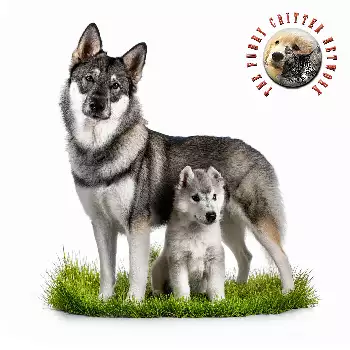The primary function of the Norsk Elghund Sort throughout its long history has been that of a specialized big game hunting companion, specifically developed to track, locate, and hold large prey animals such as elk, moose, and bear until human hunters could arrive. Their hunting methodology differs significantly from that of pack hounds or sight hounds, as these dogs work individually or in pairs, using their exceptional scenting abilities and intelligence to locate game across vast territories of challenging Nordic terrain.
The breed's distinctive hunting style involves silently tracking the scent trail of large game, often across many miles of forest, mountain, and tundra. Once the quarry is located, the Norsk Elghund Sort employs a unique technique of "holding" the animal by circling around it while barking in their characteristic penetrating voice. This vocalization serves multiple purposes: it keeps the prey animal's attention focused on the dog rather than allowing it to escape, it communicates the dog's location to hunters who may be miles away, and it provides continuous updates about the animal's movements and behavior.
Beyond their hunting prowess, these dogs served as multipurpose farmstead guardians in traditional Norwegian rural communities. Their keen senses and natural protective instincts made them excellent watchdogs, alerting families to approaching strangers, predators, or dangerous wildlife. Their compact size and efficient metabolism made them practical companions for families living in harsh climates with limited resources, as they required less food than larger guardian breeds while providing superior protection and companionship.
The breed's intelligence and trainability led to their use in various specialized roles throughout Norwegian history. During times of conflict, they served as messenger dogs and patrol companions, using their natural stealth and intelligence to navigate dangerous territories. In peacetime, they often worked as herding dogs for reindeer and other livestock, particularly in northern regions where their cold-weather adaptations gave them significant advantages over other breeds.
In modern times, the Norsk Elghund Sort has adapted to new functional roles while maintaining their core characteristics. Many still serve as hunting companions in Scandinavia and other regions where big game hunting remains popular. Their scenting abilities and endurance make them valuable members of search and rescue teams, particularly in wilderness and cold-weather scenarios where their natural adaptations provide crucial advantages.
The breed has found success in competitive dog sports that showcase their natural abilities. Tracking competitions, scent work, and agility trials all provide outlets for their intelligence and athleticism. Their strong food drive and eagerness to please make them capable competitors in obedience and rally sports, though their independent nature requires handlers who understand and respect their decision-making capabilities.
As family companions, the Norsk Elghund Sort functions as a devoted guardian and activity partner. Their moderate size makes them suitable for suburban living, while their exercise requirements can be met through daily walks, hiking, and interactive play. Their natural alertness and protective instincts make them excellent family watchdogs, though proper socialization ensures they can distinguish between normal activities and genuine threats.
The breed's function as a cultural ambassador for Norwegian heritage cannot be overlooked. Many owners are drawn to the Norsk Elghund Sort specifically because of their connection to Viking history and Norwegian culture. This role has become increasingly important as breed enthusiasts work to preserve and promote awareness of these remarkable dogs and their contributions to human civilization throughout northern Europe.

